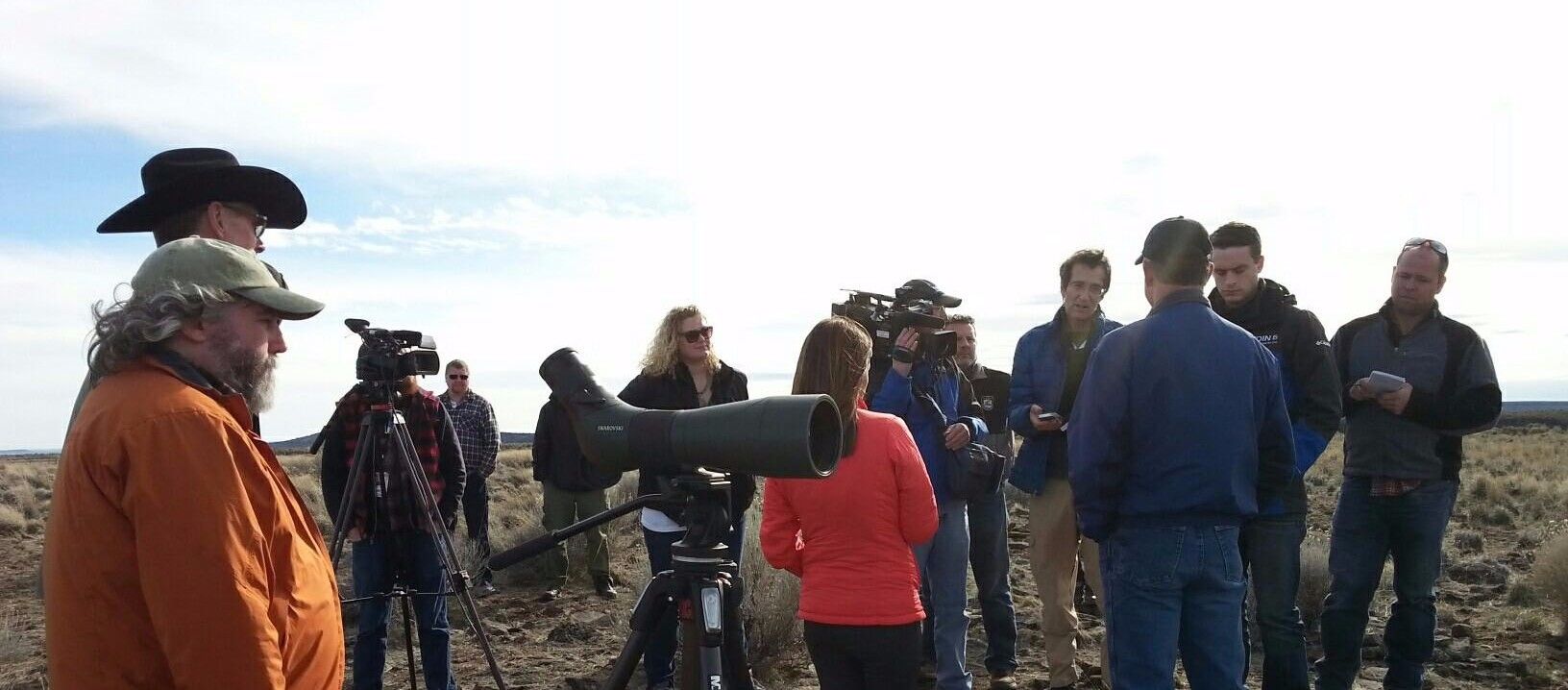Last spring, the Harney Basin Wetlands Collaborative acquired an Acoustic Doppler Current Profiler (ADCP). The ADCP was purchased using funds the collaborative received from the Oregon legislature for wetlands restoration.
It is a device that uses sound waves to measure the speed and direction of currents through the water column. The National Oceanic Atmospheric Administration, for example, uses ADCPs to understand how water moves, which in turn provides important information about biological, chemical and physical properties of the ocean.
The collaborative’s intent for the ADCP is to measure streamflow on the Malheur National Wildlife Refuge and throughout the Harney Basin through the Donner und Blitzen River, the Silvies River and other streams in the basin.
The process
Sarah Weber is an undergraduate student at the University of Oregon who has worked for the refuge for the last two summers as the substation management technician. The position involves irrigation and maintenance for the refuge. This summer, because of her interest in water quality, Weber was also put in charge of running the ADCP. “The goal of our research was to quantify the effect of management on both the quantity and the quality of water going through the refuge, particularly with quality pertaining to turbidity and temperature,” she said.
She stationed sites along the Blitzen River throughout the refuge and every couple of weeks throughout the summer, she took measurements with the ADCP.
The device looks like a little pontoon. It has a sensor that sticks down into the water and a computer that sits on top of that. Weber can connect to it via Bluetooth with a laptop computer, where she can see the live data for velocity and depth. With a rope attached to the ADCP, Weber stays on a bridge and pulls the device perpendicular to the water flow in a transect, a movement from one side to the other. She does this at least four times to get an accurate reading. The results of the various transects are averaged and the device will produce a discharge reading.
At each site, she also placed a water quality sonde, which is a device that stays in the water the whole time and takes continuous data for turbidity and temperature. Water samples were taken at each site to examine water quality.
Measurements were taken 10 different times at 5 different sites through the spring and summer starting in March and ending in September.
“Essentially, no high quality streamflow data has really been achieved or gathered on the entirety of the Blitzen River between Page Springs and Sodhouse Dam.,” Weber said. Much of the research being done on the refuge has focused on the marshes and Malheur Lake. To know how water quantity and quality is affecting water management the Harney Basin Wetlands Collaborative decided more information about the water in the Blitzen would be helpful. The research gathered using the ADCP provides that first initial snapshot of information. Weber noted that the data could help provide information on how the Blitzen River impacts Malheur Lake as well as provide more information about the species that live there such as red band trout and western ridge mussels. “Having this data for the refuge is really important to give them an idea of the status of the resources that they’re managing,” she said.
The results
The data has been gathered. It now needs to be analyzed. Weber will write up a report, which will be completed in February. Some initial impressions from the data were clear early on. Weber noted that much of the sediment in the river moved down in the spring, which was expected. “But then once we got into the summer, the turbidity at our site at Page Springs essentially went to zero. It was very, very clear,” she said. “Throughout the rest of the refuge, it seemed like we were getting into this shift where the turbidity started to turn into organics.”
She said they would like to continue the research next year and focus perhaps on algae and temperature as well as those outputs from the canals and how those are affecting the river. “This was a first look,” she said of the data collected this year. “We are definitely looking to see if there are any point sources of turbidity that we should be concerned about.”
Because the environment can be so variable from one year to the next, the more data that is collected, the better. For example, 2023 was an unusually good water year for the basin. “We had so much water, we were trying to figure out where to put it all,” she said. From talking with people familiar with the area, “this year seems like a more moderate to baseline year,” she said.
The ADCP provided a safe way to collect data on the river. Previous data collection had to be done with a flow tracker and involved a technician physically getting into the water to take a measurement. In high spring flows, where the water is flowing quickly in greater depth, that can be unsafe. With the ADCP, Weber was taking measurements in water that was up to 8 feet deep. “You would never be able to get that with the flow tracker,” she said.
Weber believes that information collected by the ADCP could be helpful to the refuge in determining its water budget equation. If this kind of data is collected regularly, it will help water managers understand and predict the amount of discharge and sediment loads from year to year as well as how variables like temperature come into play.
Tools such as the ADCP help provide data that can be used for years to come to help land managers and those with a stake in the basin’s wetlands better understand the quantity and quality of water in the basin.

